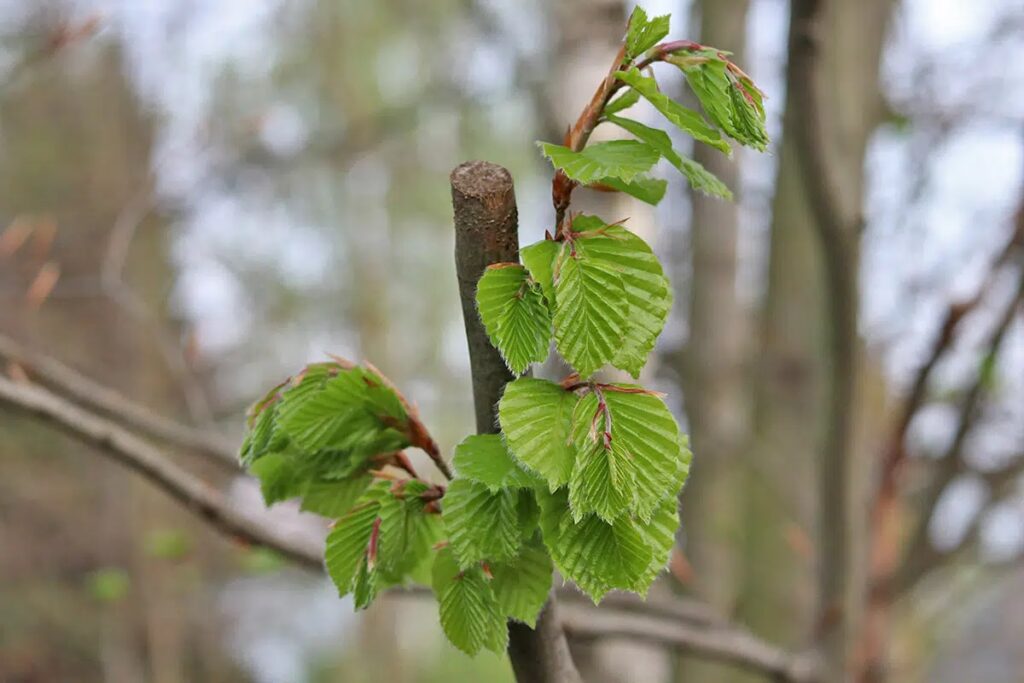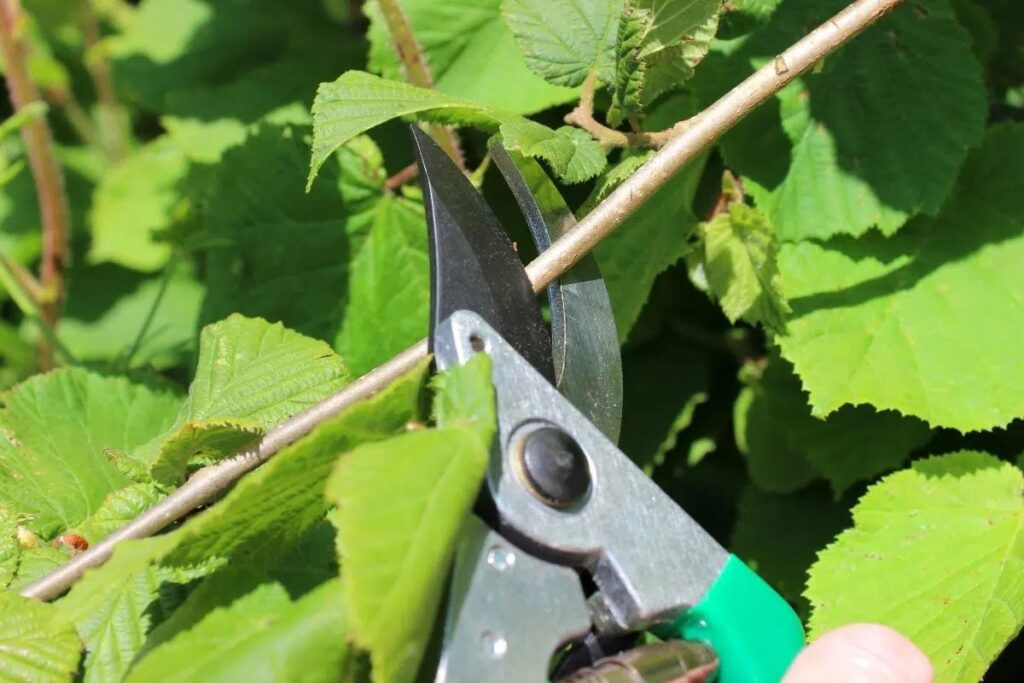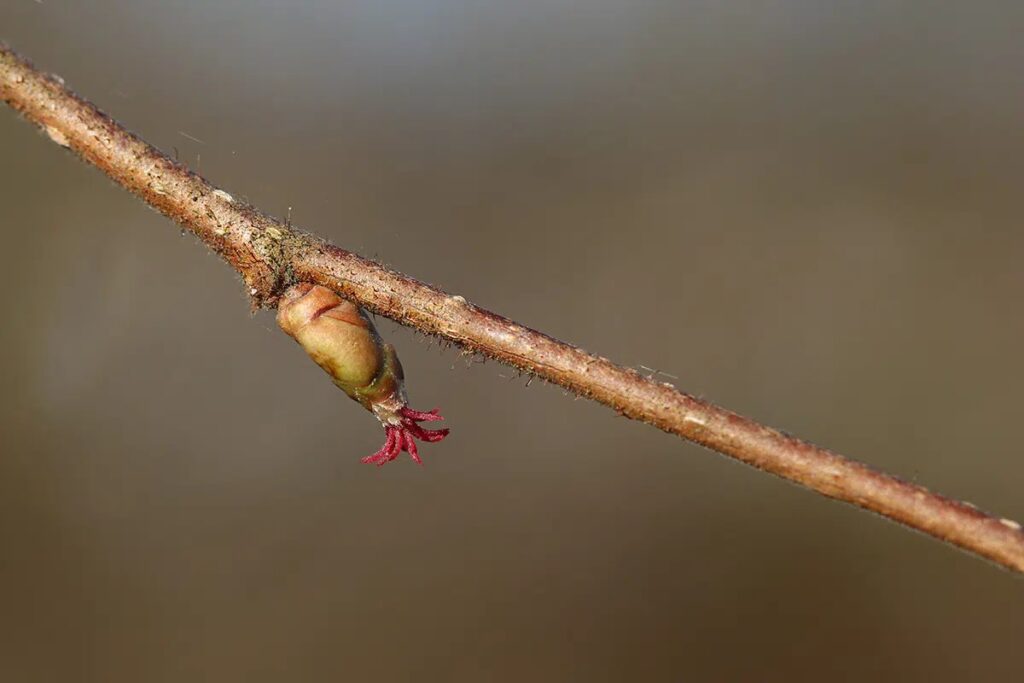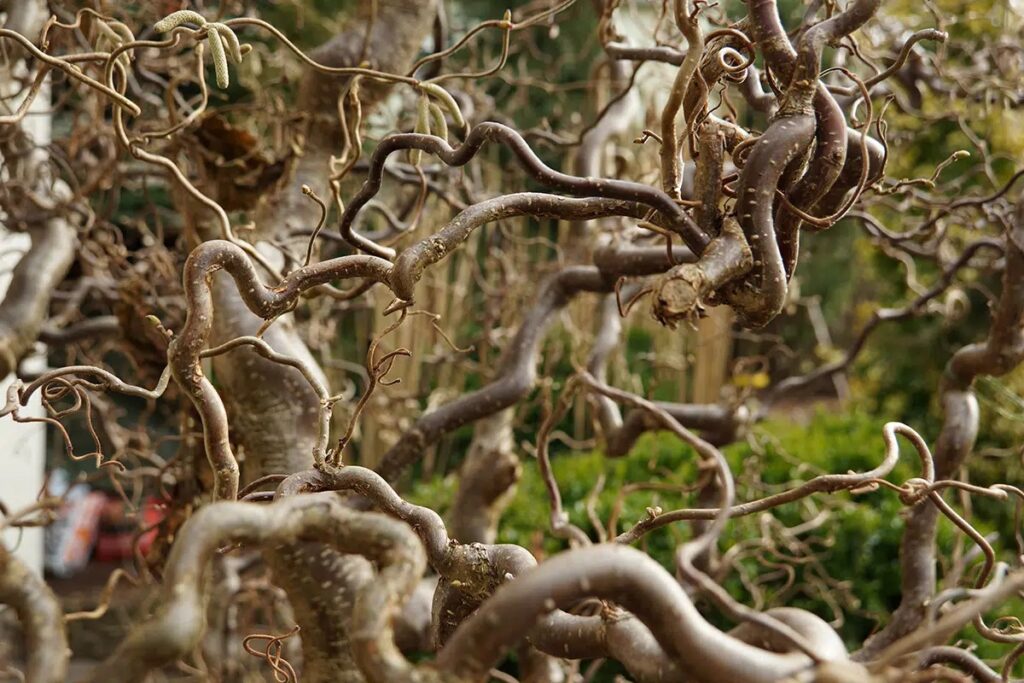The hazelnut tree (Corylus avellana) is one of the most undemanding plants in Central Europe. However, its vigorous growth can push some garden owners to their limits. With the right instructions, pruning the hazel tree is straightforward and can be done at the optimum time.
Contents
- 1 Required utensils
- 2 Best time
- 3 Types of pruning
- 4 Root pruning
- 5 Plant structure pruning
- 6 Rejuvenation pruning
- 7 Thinning
- 8 Topiary
- 9 Pruning grafted hazelnut trees
- 10 Cutting corkscrew hazel
- 11 Remove wild shoots
- 12 Frequently asked questions
- 13 What to do if the hazelnut tree continues to wither?
- 14 Is there a ban on pruning hazelnut trees?
- 15 Author
Required utensils
To cut a hazelnut tree requires suitable pruning tools. Here it depends on the tree size and branch thickness. It is important that it is thoroughly cleaned and disinfected before use so that no pathogens or pests are transmitted via it. The following tools offer a selection for every need:

- Pruning shears for low-lying thin branches or shoot tips
- Pruning shears for thicker branches
- Telescopic lopping shears or cutting giraffe for high lying cutting areas
- Tree/wood saw as an alternative
Best time
When is the best time to prune hazelnut trees depends on the type of pruning. Generally, this is between October and March. Root pruning is an exception. Exact dates can be found below in the descriptions of the pruning types.
Types of pruning
Is the hazelnut tree growing too tall, is it old, is it a young plant, or is it no longer blooming profusely? For each “problem” there is the right type of pruning.
Root pruning
Root pruning is necessary in two situations: when a hazelnut tree is newly planted and when it grows too large as a shrub in a container or is to be kept small.

New planting:
When replanting, root pruning is advised because it stimulates the roots to grow and they establish themselves better/faster in the soil. This in turn promotes resistance. If some of the shoots are also shortened, the risk of disease is reduced and water evaporation decreases. The following information should be taken into account:
- best time: between spring and summer during the growing season.
- shorten shoots by one third
- cut off kinked roots
- cut off withered and damaged root parts
Root pruning for tub plants:
A hazelnut tree is a fast grower. Without pruning the roots, it will regularly cause containers to break/burst. To prevent this and keep it at a desired height, root pruning is the most effective method. Here’s how to do it:

- best time for cutting: between October and the end of February
- expose roots
- shorten between one third and one half
- carry out rejuvenation pruning on shoots at the same time (see instructions under Pruning Types “Rejuvenation Pruning”)
- should be repeated every two to three years
Plant structure pruning
For a young hazelnut tree, the build-up pruning is used. It is considered the most important among pruning methods. Through it, natural growth is encouraged and young plants are strengthened in their development so that they grow into magnificent, healthy adult plants. If the plant is not pruned, poor growth and an unsightly appearance are not uncommon. Here’s what amateur gardeners should know about it:
- Best time to cut: spring just before or right at the beginning of the growing season.
- period: between two and four years of life, depending on the stage of development (considered “juvenile” up to six years)
- shorten the central main shoot only slightly, cut down the shoots around it in a spherical shape (usually done by the nursery)
- Cut off basic shoots – two to three should be left standing
- ideal when between ten and twelve new stems have formed evenly distributed
Rejuvenation pruning
This type of pruning is usually applied to older hazelnut trees and shrubs. Especially those that have not been pruned for years, rejuvenation pruning is the first choice among pruning methods. When an aging specimen no longer grows splendidly or a younger one has been weakened by disease or pests, for example, rejuvenation pruning ensures the promotion of vitality, stimulation of flowering and favors dense growth. This type of pruning should be done differently over a period of three years:

- best time for pruning: between October and March (choose frost-free and dry day)
- first cut back one third of all shoots to 40 centimeters (be sure to leave some buds)
- Cut above outward pointing eyes (for spherical growth)
- in the following year cut one third of the previously uncut shoots
- in the last year shorten remaining uncut shoots
- from the fourth year, if necessary, topiary can be done
Thinning
Thinning pruning is about bringing “order” to the branches. This is to prevent or correct tangles and allow light and air to reach the interior.
Instructions:
- best time for pruning: between the beginning and end of February – smaller pruning projects also until March.
- cut off dried up, old and dead as well as densely overgrown branches in the interior
- for hazelnut bushes near the ground, cut off as many older shoots as new ones are present
- cut off root shoots from the trunk of sturdy hazelnut trees
- remove shoots growing vertically from the trunk
- cut too many side shoots on the trunk (one per side is sufficient)
- cut off one shoot in case of crossed growth
frequency of thinning pruning: in case of bare growth inside or every three years
Topiary
If the hazelnut tree or shrub is too misshapen, corrections can be made by means of topiary. This type of pruning is not absolutely necessary, since thinning and rejuvenation pruning can also be used to achieve at least a hint of shape. With topiary, care must be taken not to cut away too much. The rule here is: it is better to cut more often than to shorten a lot once. Otherwise, it should be noted:
- Cut hazelnut tree between October and February
- Repeat pruning: every two to three years is sufficient.
Pruning grafted hazelnut trees
If a grafted hazelnut tree is to be pruned, it is essential to identify the grafting points in advance. These can be recognized by their thickening in the bark. Sometimes “kinks” are also formed. No matter which pruning method is chosen, the pruning must always be done above the grafting points.
Cutting corkscrew hazel
Among the various hazel plants, the corkscrew hazel is also very popular and widespread. It owes its name to the twisted shoots. This species is particularly prone to the so-called hollyhock, in which shoots grow upwards from the root, straight as a candle. In addition to robbing the plant of energy, this disturbs the appearance of the otherwise striking overall appearance. As with the classic hazelnut, they should be removed immediately. In addition, targeted pruning can promote shoot twining and encourage growth. This is achieved by the following procedure:

- Remove cane shoots: all year round
- Best time for pruning: autumn and early spring before budbreak
- Pruning frequency: once a year is ideal, otherwise at least every two years.
- Shorten shoots that protrude too far by a maximum of two-thirds
- Cut off remaining shoots at the tips by about five centimeters (stimulates growth)
- Remove crossing shoots (at least one of them)
- Cut off inwardly bent shoots below the bend
- Shoots with growth disturbances, reduced foliage as well as flower formation should be shortened once strongly
Remove wild shoots
Wild shoots are those that shoot vertically upwards directly from the root. They should not be confused with water shoots, which grow out of the trunk. Wild shoots are also called cane shoots. They are detrimental to a hazelnut tree because their rapid growth deprives it of enormous amounts of energy and thus impairs growth. For this reason, they should be removed quickly, regardless of the timing. Cutting them off is not suitable, because residues remain on the roots. The optimal method is to pull them out in a jerky manner, hoping that they will completely detach from the root.
Frequently asked questions
What to do if the hazelnut tree continues to wither?
If diseases and a pest infestation can be ruled out, radical pruning may be the solution. This involves severely shortening all shoots. In the case of a tall hazelnut tree, it should be cut down to at least one-third. For shrubs and the corkscrew hazel, radical pruning should be done to 15/20 centimeters above the ground. Make sure that eyes are left standing. If they are higher, adjust the remaining length accordingly.
Is there a ban on pruning hazelnut trees?
There is a ban on pruning in general for all trees, shrubs and hedges. This includes any pruning between March 1 and September 30 because it may disturb nesting birds and their offspring or destroy suitable breeding sites through severe pruning. Only minor topiary pruning can be done to the hazelnut tree during this time. Heavy pruning, such as radical pruning, should only be carried out outside of the above-mentioned period.


